Table of Contents
The beauty of Mathematics in the Alhambra
Mathematics in the Alhambra, really?
Indeed, believe it or not, a great part of the beauty of the Red Fortress has a lot to do with maths, and in particular with Geometry applied to design.
The Muslims not only used trigonometry to work out distance in their journeys, but also used it, in its simplest version, in creating their amazing designs.
Yet, one of the most splendid examples of Muslim mastery of design is the Alhambra.
Which even to this day fascinates the senses and challenges our minds.
As for Muslims, to paint people and animal images may lead to idolatry, they dedicated themselves to craft beautiful and very complex tile work patterns.
Where each tile fits to perfection into the maze of the sophisticated pattern.
Both mathematicians and artists have been fascinated by these intricately Arabic design patterns that repeat themselves to remind us of God’s greatness.
Geometry applied to design was viewed as a force capable of unifying the domains of the secular and the religious.
“The study of Geometry is one of the gates by which we advance to the soul’s knowledge essence, and that is the root of all knowledge”.
The use of mathematics in the Alhambra has resulted in the perfect combination of science and art.
Mathematics in the Alhambra, where can I find them?
Everywhere.
In Islamic culture, the use of geometry applied to design is present almost in every place.
This tradition started in the 8th century AD, when artisans, inspired by Roman and Persian designs, created innovative shapes to express their inspiration.
The mathematics in the Alhambra are clearly captured in the endlessly repeating tile patterns that provoke admiration and reflection on the perpetual order.
Let see some examples from the Alhambra Palace:
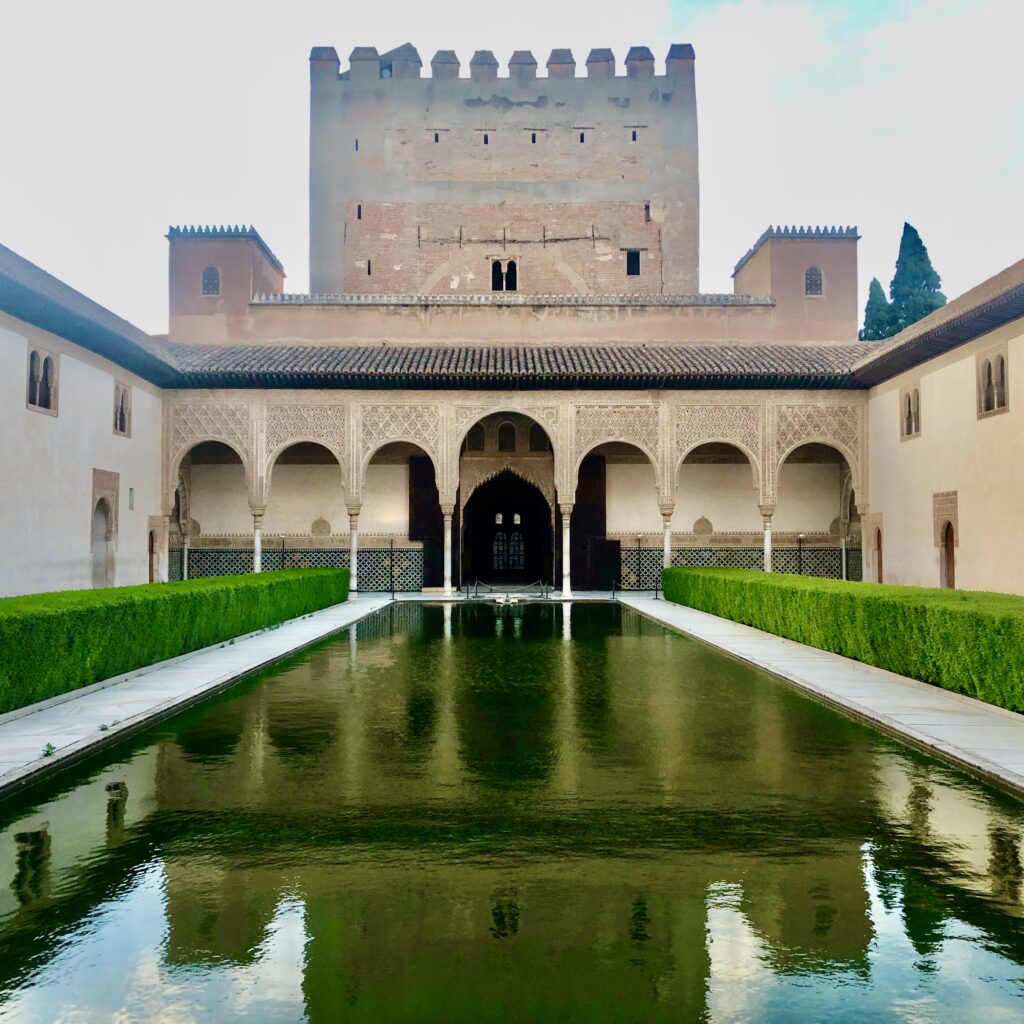
The Comares Palace
Built by Yusuf I and Muhammad V during the 14th century.
This palace is an icon of the Nasrid dynasty’s power because of its symbolic decoration
The Comares Palace represents sheer Mathematics, for instance.
At first glance we find the simple scheme that defines the palaces of Islamic architecture, a tower attached to a courtyard with a pond in the center.
However, there is a hidden element that has generated the whole palace.
The floor plan of the Throne Room.
A true square of Pythagorean proportions, 7 to 5, what today we call a square root of two.
Duplicating it, as if it were a reflection in the pool, we obtain the other part of the palace.
The pavilion to the south, and doing the same transversely, we have the complete floor plan of the Comares Palace.
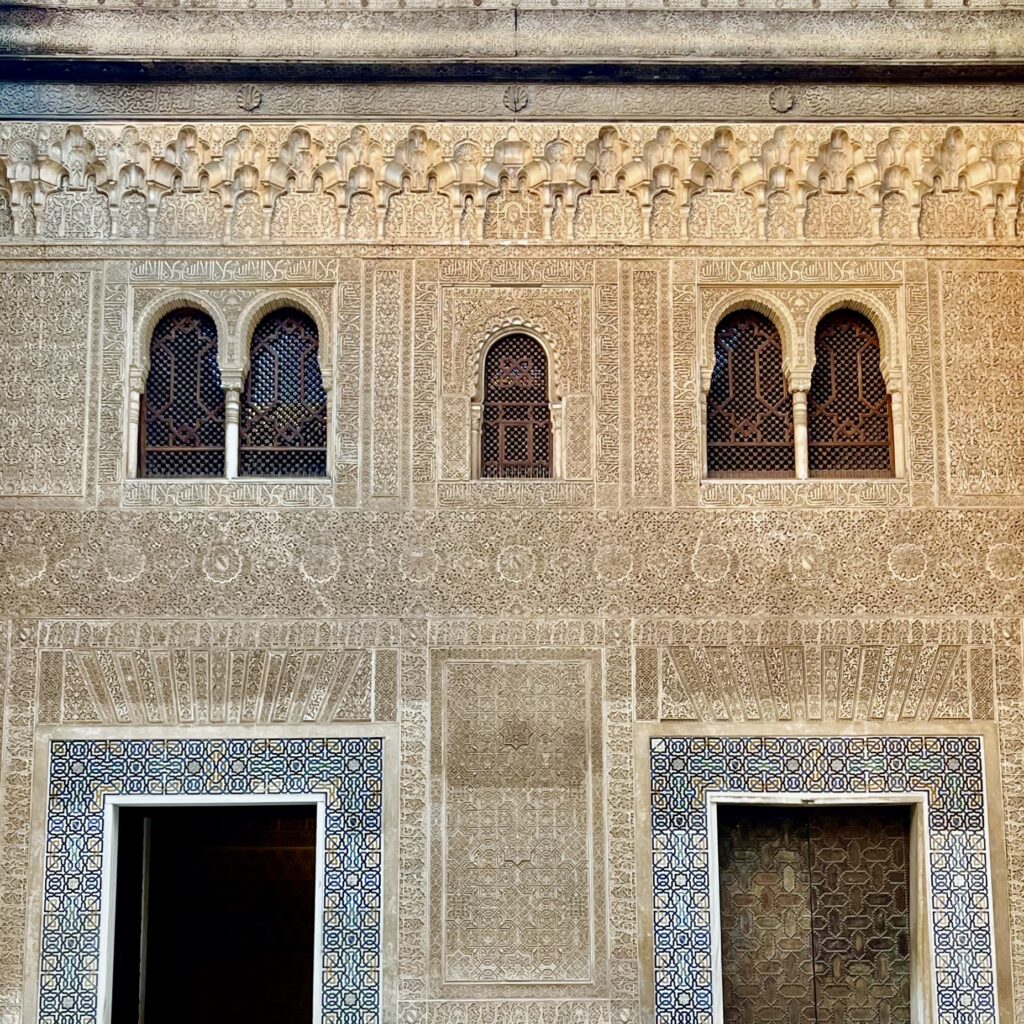
The facade of the Comares Palace
Commissioned by Muhammad V in 1369.
In this facade the beauty of the mathematics of the Alhambra can be appreciated in its axial symmetry.
That is the aurea division of a segment into two parts, and the successive divisions of each of these parts, to form the rectangles that make up the magnificent facade.
The facade of Comares captures our attention because of its extraordinary beauty.
As a result of its design.
Based on axial symmetry, the aesthetics of the Comares facade is based on the divine proportion and the correction of the visual distortion of the facade.
Axial symmetry is used for two reasons:
First, simplifies the project; it is enough to design one half and reproduce it by reflection.
Second, creates balance between both parts, similar to the human body, thus is more attractive to the viewer.
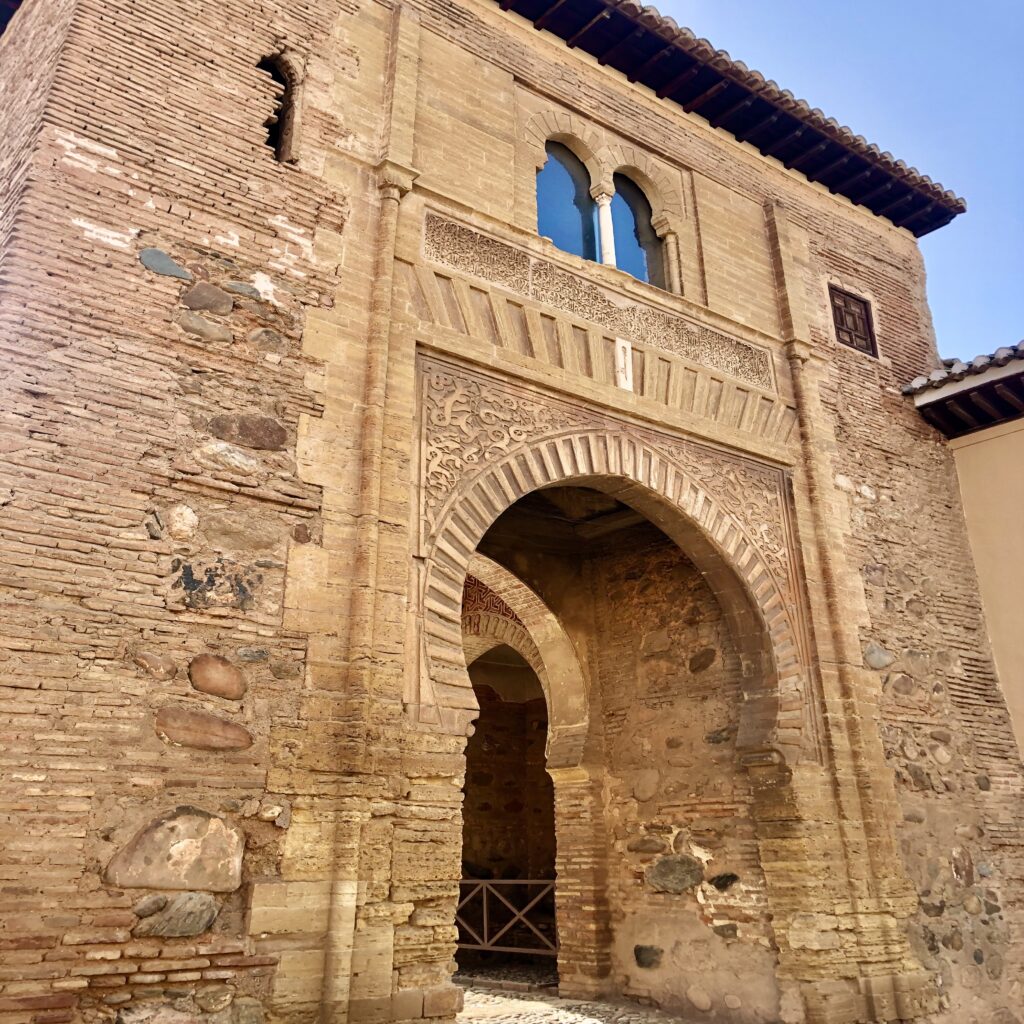
The Wine door
The rectangle is one of the most used proportions in Muslim decoration.
But not just any rectangle, the one with the square root of 2 (√2).
And why is it so special?
√2 is an irrational number, 1.41421356…,a number that never ends.
Puerta del Vino is a clear example of the proportion of a rectangle √2.
It could be said that this entrance of the Alhambra has exactly these proportions.
The only one that when folded on itself reproduces exactly the same proportion of the original.
This proportion applied to the architecture achieves an exquisite balance.
And we can find it both in the gates and in the windows of the Alhambra
Mathematics in the Alhambra, how does the magic work?
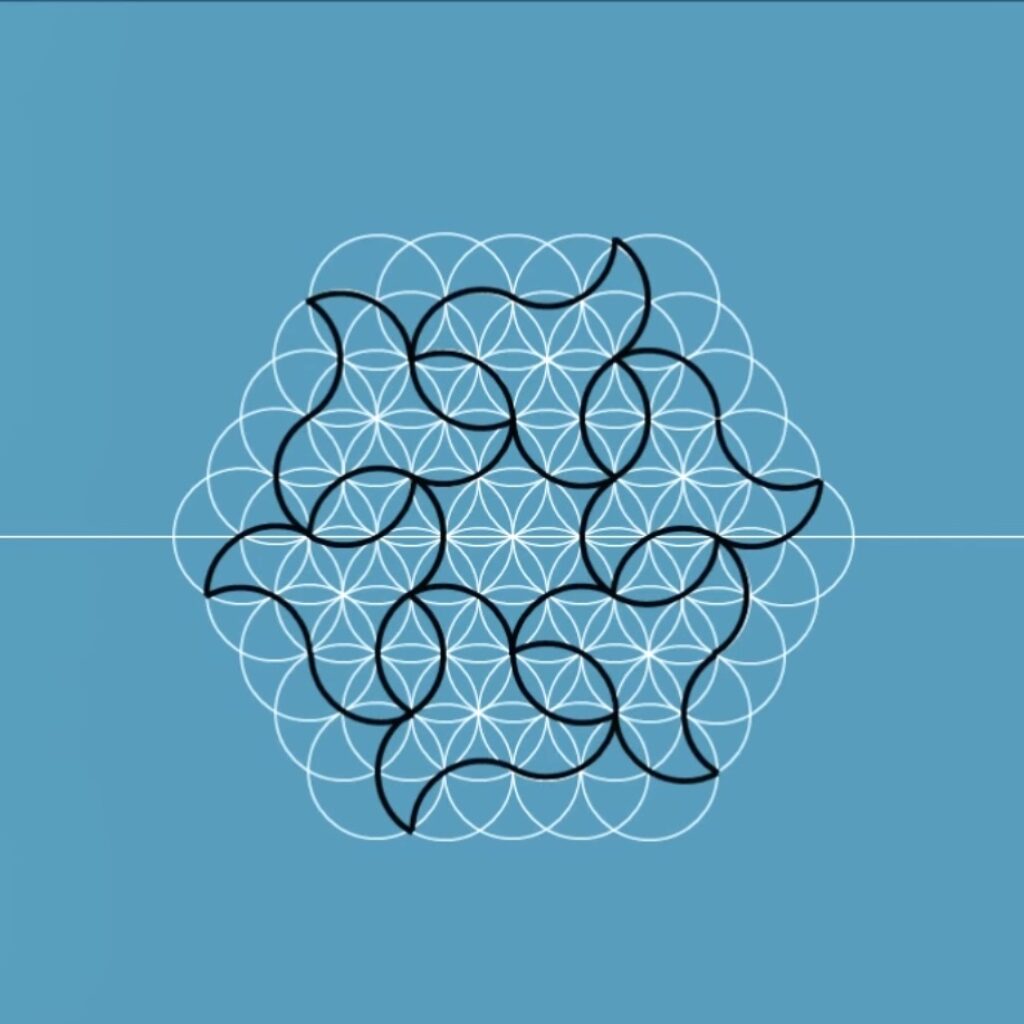
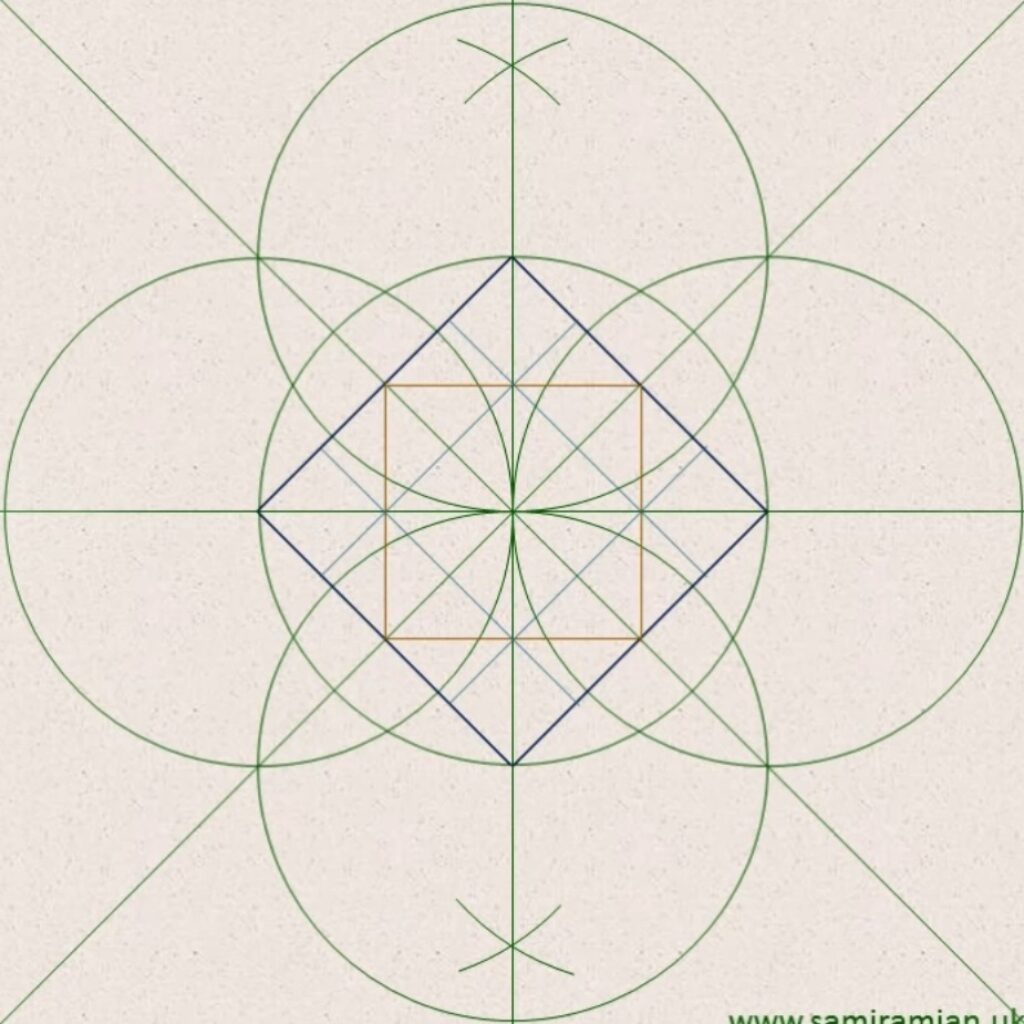
Well, it all starts with a circle.
This circle is split into four, five or six equal sections.
And each of these partitions creates a different pattern.
So, how do you recognise every layout?
For example, some designs contain stars surrounded by petals.
By counting the number of rays in a star or the number of petals surrounding it, you can tell which category the motif falls into.
Then, a star with six rays, or six petals, belongs to the sixfold category.
And the second secret ingredient is an underlying grid.
Invisible, but essential for any pattern.
The grid helps determine the scale of the composition before starting and also keeps the pattern precision.
How do we combine our elements?
We start with a circle divided into eight equal parts.
Then, a pair of criss-crossing lines overlap with two other lines, called construction lines.
By choosing a set of their segments we have the basis for a repeating pattern.
A whole variety of designs can be obtained from the same construction lines.
And a completed pattern will appear.
A grid with many repetitions of this mosaic is created in a process called tessellation, to cover a surface using polygons without leaving gaps.
In geometry there are only 17 flat crystallographic groups,or ways of tessellating a plane.
And they are all present in the Alhambra Palace.
Note that Alhambra was built between the 14th and 15th centuries.
However, it wasn’t until 1891 when Evgraf Fedorov, a Russian mathematician, compiled the list of planar crystallographic groups.
The Nasrid craftsmen traced with such mastery the geometric representations that they were able to generate all the possible symmetry groups.
Leaving a legacy not only ornamental, but also mathematical, since it is the only ancient monument in which the 17 designs are present.
The Alhambra palace, the inner beauty of Nasrid Kingdom
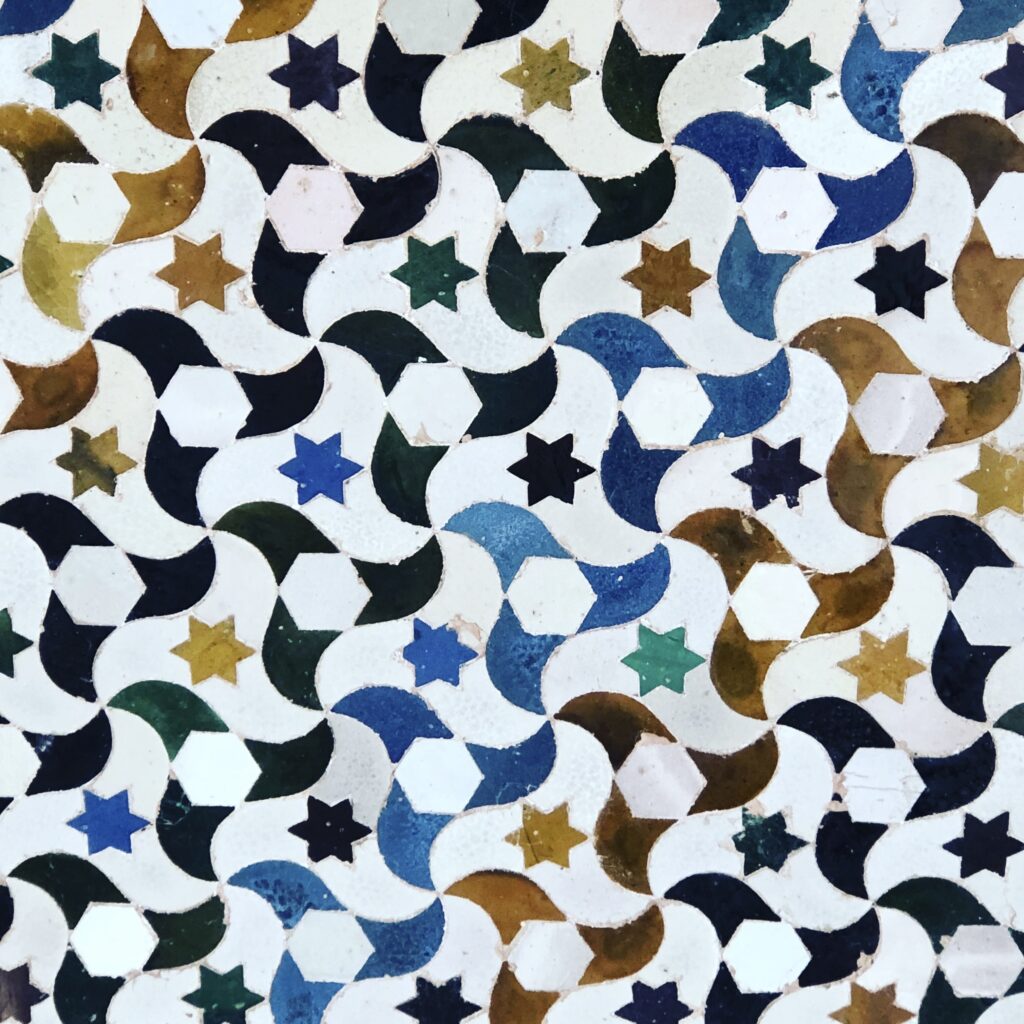
“A house is like a man, should be modest on the outside, while inside, it should hide the beauty and richness of the spirit.”
On the outside, the Alhambra palace, with its high reddish walls, shields and hides the extraordinary artistic treasures held inside.
Its outer ” austere ” appearance contrasts with the magnificent decoration of the interior of its palaces.
Where the mathematics in the Alhambra is especially reflected in tiling that creates sophisticated geometric motifs.
So, are you ready to rediscover the beauty of the Alhambra through the intellect of a mathematician and the eyes of an artist?
Contact me, and let us discover together the amazing geometric Nasrid art designs and teh beauty of Mathematics in the Alhambra palace.


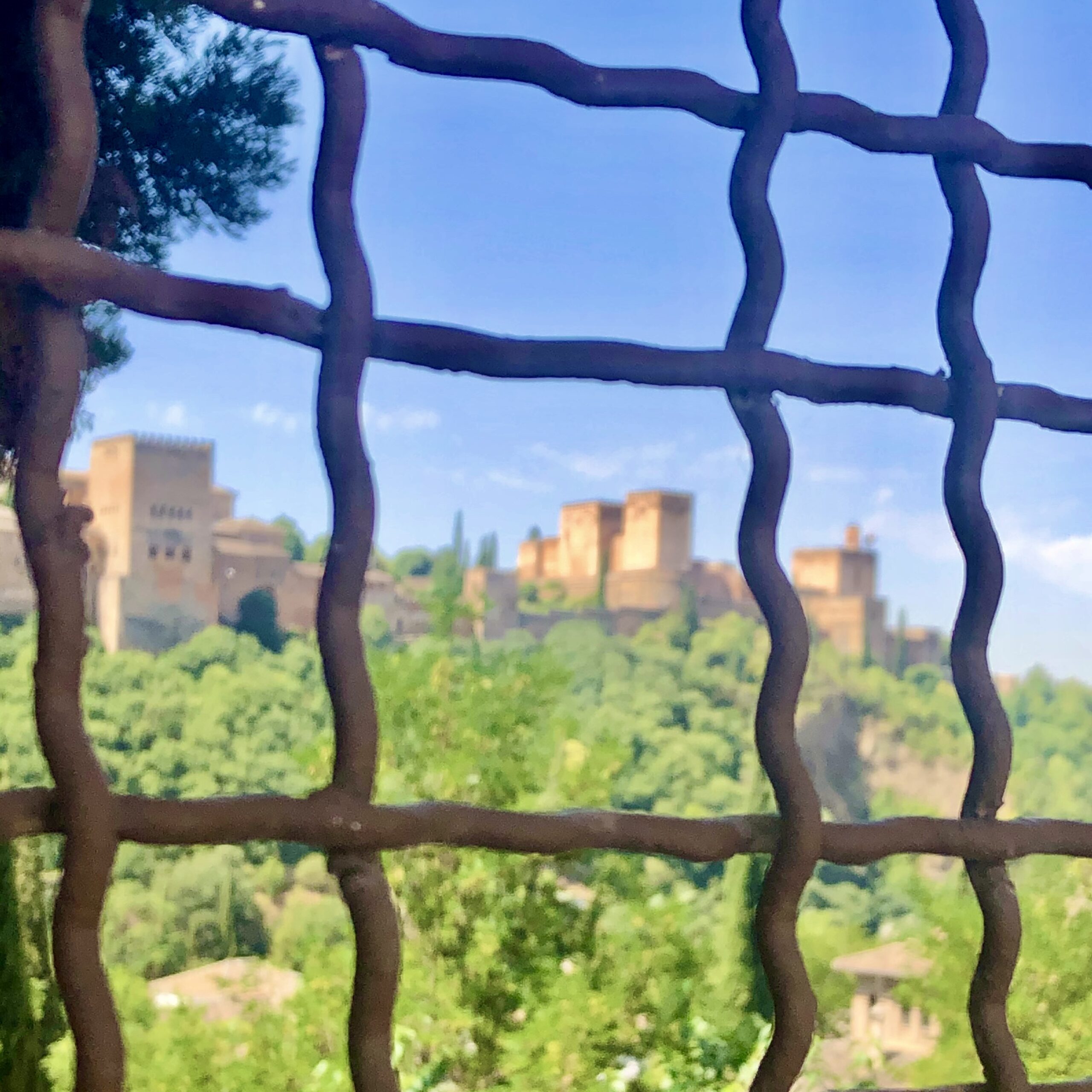

Comment (0)